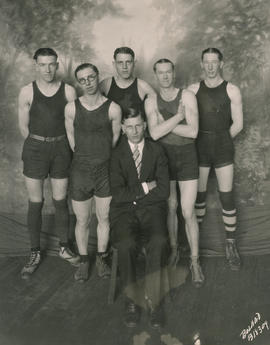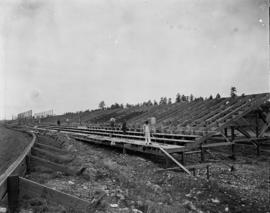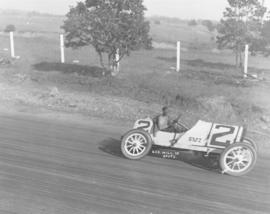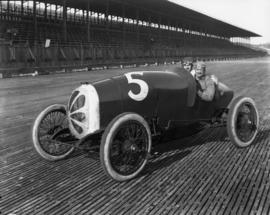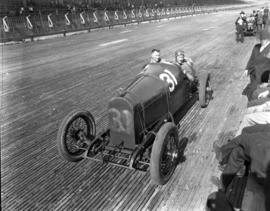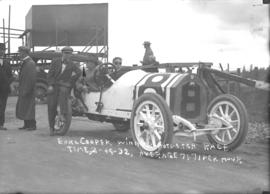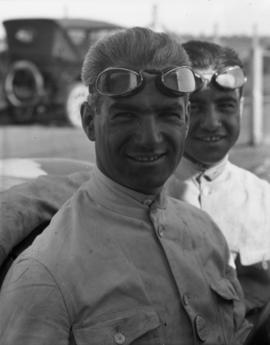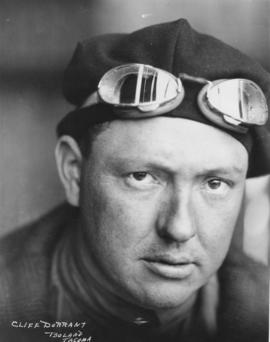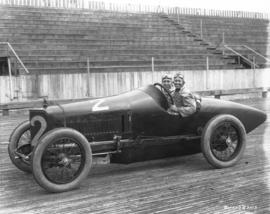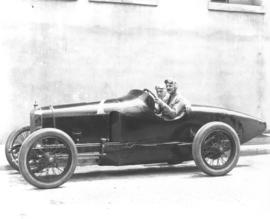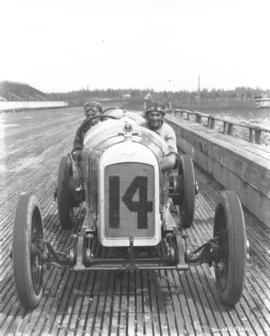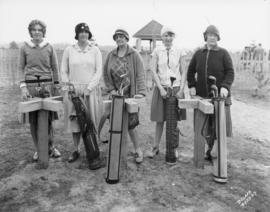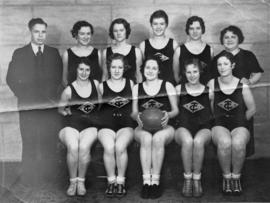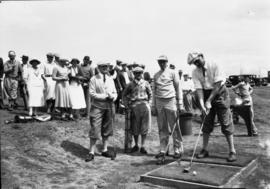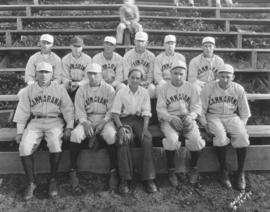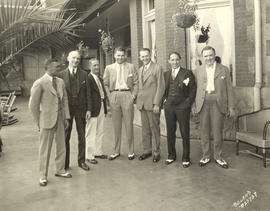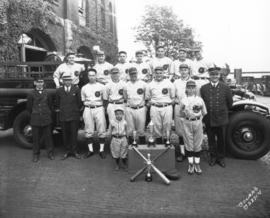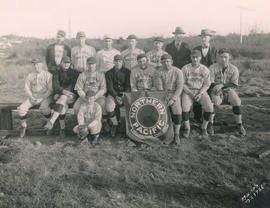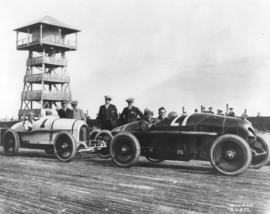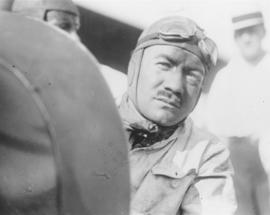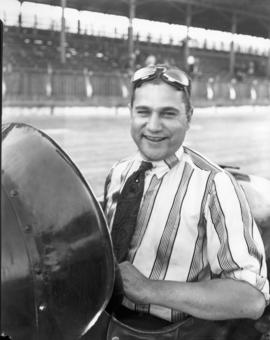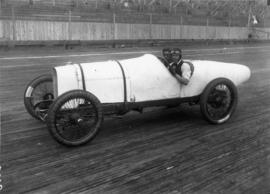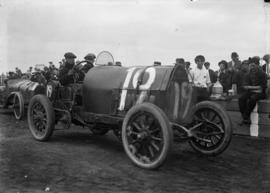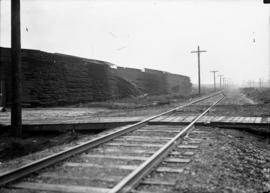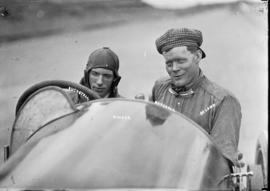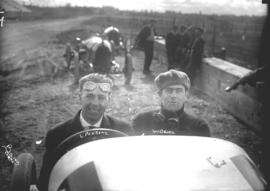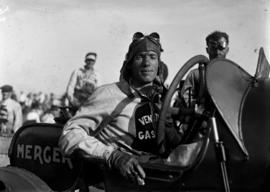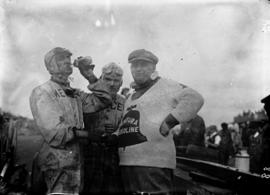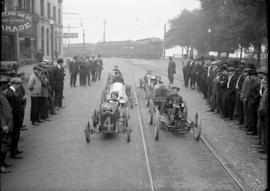Firemen's Union #31, victors in the B Division Industrial League Championship in 1930, pose in front of a fire truck in May of 1931. Four trophies are displayed along with crossed baseball bats and a glove, flanked by team mascot Bud Christensen (left) and bat boy Bill Frazier. The Firemen opened up the 1931 baseball season with an exhibition game at Lincoln Bowl on May 9th against Shaffer Box, defending City Champs. Shaffer Box had defeated the Firemen in a bitterly contested game for the city title; this rematch would pit the same teams with the same result, another Shaffer Box victory. Team members of the Firemen were listed in the Daily Ledger as: Back row: Glen Lawson, Hank Hubert, H. Larson, K. Larson, Al St. Pierre, Walt Christensen, Al Pentecost. Middle row: Property man Harry Frazier, coach Bobby Vaughn, George Sharrick, H. Wiengard, Det Ketler, George Dague, Ed Burk, manager Emory Whitaker. Mgr. Whitaker would later become Tacoma's Fire Chief from 1932-1944. (TDL 5-6-31, p. 10, 5-8-31, p. 10, 5-10-31, B-1) TPL-450
Baseball players--Tacoma--1930-1940; Fire fighters--Tacoma--1930-1940; Fire engines & equipment--Tacoma; Awards; Uniforms; Whitaker, Emory; Vaughn, Bobby;
